This article was co-authored by Pradeep Adatrow, DDS, MS. Dr. Pradeep Adatrow is the only board certified Dentist, Periodontist, and Prosthodontist in the southern United States. With over 15 years of experience, Dr. Adatrow specializes in dental implants, TMJ treatments, periodontal plastic surgery, surgical and non-surgical periodontics, bone regeneration, laser treatments, and soft tissue and gum graft procedures. He received a BS in Epidemiology and Biostatistics from the University of Alabama and earned his Doctor of Dental Surgery (DDS) degree from the University of Tennessee College of Dentistry. Dr. Adatrow then completed a three-year postgraduate program in periodontics and implantology at Indiana University and went on to complete another three-year postdoctoral program in advanced prosthodontics from the University of Tennessee. He also serves as a full-time professor and the Director of Surgical Prosthodontics at the University of Tennessee. Dr. Adatrow received the Dean's Junior Faculty Award and the John Diggs Faculty Award, and he was inducted into the Deans Odontological Society. He is board certified by the American Board of Periodontology and is a Fellow of the prestigious International College of Dentistry – a feat that only 10,000 others worldwide can claim.
This article has been viewed 44,527 times.
It’s hard to predict when a crown will come lose. So don’t worry if yours does! There are plenty of products on the market that will help you re-cement your crown if you cannot get to a dentist right away. However, if your tooth is broken or you cannot get the crown to fit properly, then your dentist will need to re-cement the crown for you.
Steps
Cleaning Your Tooth and Crown
-
1Notice that your crown has fallen out. Crowns typically fall out while eating. The crown may be stuck in a piece of food, or you may feel it in your mouth while you are chewing. If this happens, take the crown out of your mouth or the piece of food. Clean it off with water and a paper towel.[1]
- Do not leave the crown out of your mouth for more than 24 hours. If you do, your teeth may shift, causing the crown to not fit properly.
-
2Look inside the crown for soft or hard tooth material. If you see soft or hard tooth material in the crown and your tooth appears broken, then your dentist will need to re-cement the crown for you. If your tooth appears unbroken and the crown is mostly hollow, then you can try to re-cement the crown yourself.
- Additionally, if your tooth appears unbroken and the crown’s post is still intact, then you can re-cement the crown at home.
- Contact your dentist immediately if you have swelling or extreme pain.
Advertisement -
3Clean your tooth with a toothbrush and floss.[2] Use a toothbrush to scrub cement and food particles off of your tooth. Floss around your tooth to clear away any excess cement or food particles as well. Use a toothpick to clean off hard-to-remove cement.
- Your tooth must be completely clear of debris for the crown to fit properly.
-
4Remove loose cement from inside the crown. Open up a paper clip. Use the tip of the paper clip to scrape out loose cement. Scrape out as much cement as you can.[3] As you remove the cement, place the crown under running water to clear away any loose particles.
- If your crown has a post, use the paper clip to scrape cement off of the post. If the post breaks or becomes loose, then you will need to wait for the dentist to re-cement the crown for you.
Fitting the Crown
-
1
-
2Clean your tooth and crown again if it does not fit properly. Scrub your tooth with your toothbrush or use a toothpick to remove any additional debris. Scrape out as much cement as you can from the crown with the paper clip.
-
3Fit the crown again. If the crown does not fit properly one way, turn it and try to fit it on from a different angle.[6] Try to fit it on from the tongue side. If that does not work, then try to fit it on from the cheek side.
- Be patient when you are trying to fit the crown onto your tooth. Do not force the crown. Forcing it may cause the crown or your tooth to break.
- If you cannot fit the crown properly, then you will need to wait for your dentist to do it for you.
-
4Practice fitting the crown a few times once you find the right position.[7] Slide the crown on and off your tooth to become comfortable with the motion. Each time you fit the crown, look in the mirror and observe how it lines up with your other teeth. Also bite your teeth together to make sure you can bite properly without the crown feeling uncomfortable or unstable.
- If you cannot see the crown because it is in the back of your mouth, then use your tongue to feel how it fits properly.
Cementing the Crown
-
1Prepare the cement per the instructions on the package. Some products require you to mix a powder and liquid together. Other products are premixed and ready to use. Whichever product you use, make sure to follow the instructions for preparing the cement.
- Do not use Super Glue or Krazy Glue to re-cement your crown.
-
2Dry your tooth and crown with gauze. The cement will adhere better if your crown and tooth are both dry. Rub your crown and tooth with tissue or gauze to dry them. Make sure your crown and tooth are completely dry.
- Make sure to remove any pieces of tissue or gauze that stick to your crown and tooth.
-
3Fill your crown with cement.[8] Fit your crown onto your tooth the way you practiced. Bite your teeth together for one to two minutes, or per the instructions on the package.
- If your crown has a post, then cover the post with cement instead.
-
4Remove excess cement with a toothpick. After the allotted time, use a toothpick to remove cement from your gums and the edges of your tooth and crown. Also remove any cement from the inside of your cheek and tongue.
-
5Pull a piece of floss between your crown and the tooth next to it. Gently place the floss between your tooth and the crown. Instead of pulling the floss down from both ends, release one end of the floss. While biting your teeth together, slowly pull the floss through your crown and tooth.
- Repeat this process on the other side of the crown.
Expert Q&A
Did you know you can get expert answers for this article?
Unlock expert answers by supporting wikiHow
-
QuestionWhere can you get cement for crowns?
 Pradeep Adatrow, DDS, MSDr. Pradeep Adatrow is the only board certified Dentist, Periodontist, and Prosthodontist in the southern United States. With over 15 years of experience, Dr. Adatrow specializes in dental implants, TMJ treatments, periodontal plastic surgery, surgical and non-surgical periodontics, bone regeneration, laser treatments, and soft tissue and gum graft procedures. He received a BS in Epidemiology and Biostatistics from the University of Alabama and earned his Doctor of Dental Surgery (DDS) degree from the University of Tennessee College of Dentistry. Dr. Adatrow then completed a three-year postgraduate program in periodontics and implantology at Indiana University and went on to complete another three-year postdoctoral program in advanced prosthodontics from the University of Tennessee. He also serves as a full-time professor and the Director of Surgical Prosthodontics at the University of Tennessee. Dr. Adatrow received the Dean's Junior Faculty Award and the John Diggs Faculty Award, and he was inducted into the Deans Odontological Society. He is board certified by the American Board of Periodontology and is a Fellow of the prestigious International College of Dentistry – a feat that only 10,000 others worldwide can claim.
Pradeep Adatrow, DDS, MSDr. Pradeep Adatrow is the only board certified Dentist, Periodontist, and Prosthodontist in the southern United States. With over 15 years of experience, Dr. Adatrow specializes in dental implants, TMJ treatments, periodontal plastic surgery, surgical and non-surgical periodontics, bone regeneration, laser treatments, and soft tissue and gum graft procedures. He received a BS in Epidemiology and Biostatistics from the University of Alabama and earned his Doctor of Dental Surgery (DDS) degree from the University of Tennessee College of Dentistry. Dr. Adatrow then completed a three-year postgraduate program in periodontics and implantology at Indiana University and went on to complete another three-year postdoctoral program in advanced prosthodontics from the University of Tennessee. He also serves as a full-time professor and the Director of Surgical Prosthodontics at the University of Tennessee. Dr. Adatrow received the Dean's Junior Faculty Award and the John Diggs Faculty Award, and he was inducted into the Deans Odontological Society. He is board certified by the American Board of Periodontology and is a Fellow of the prestigious International College of Dentistry – a feat that only 10,000 others worldwide can claim.
Board Certified Dentist & Oral Surgeon
-
QuestionCan I glue my crown back on?
 Pradeep Adatrow, DDS, MSDr. Pradeep Adatrow is the only board certified Dentist, Periodontist, and Prosthodontist in the southern United States. With over 15 years of experience, Dr. Adatrow specializes in dental implants, TMJ treatments, periodontal plastic surgery, surgical and non-surgical periodontics, bone regeneration, laser treatments, and soft tissue and gum graft procedures. He received a BS in Epidemiology and Biostatistics from the University of Alabama and earned his Doctor of Dental Surgery (DDS) degree from the University of Tennessee College of Dentistry. Dr. Adatrow then completed a three-year postgraduate program in periodontics and implantology at Indiana University and went on to complete another three-year postdoctoral program in advanced prosthodontics from the University of Tennessee. He also serves as a full-time professor and the Director of Surgical Prosthodontics at the University of Tennessee. Dr. Adatrow received the Dean's Junior Faculty Award and the John Diggs Faculty Award, and he was inducted into the Deans Odontological Society. He is board certified by the American Board of Periodontology and is a Fellow of the prestigious International College of Dentistry – a feat that only 10,000 others worldwide can claim.
Pradeep Adatrow, DDS, MSDr. Pradeep Adatrow is the only board certified Dentist, Periodontist, and Prosthodontist in the southern United States. With over 15 years of experience, Dr. Adatrow specializes in dental implants, TMJ treatments, periodontal plastic surgery, surgical and non-surgical periodontics, bone regeneration, laser treatments, and soft tissue and gum graft procedures. He received a BS in Epidemiology and Biostatistics from the University of Alabama and earned his Doctor of Dental Surgery (DDS) degree from the University of Tennessee College of Dentistry. Dr. Adatrow then completed a three-year postgraduate program in periodontics and implantology at Indiana University and went on to complete another three-year postdoctoral program in advanced prosthodontics from the University of Tennessee. He also serves as a full-time professor and the Director of Surgical Prosthodontics at the University of Tennessee. Dr. Adatrow received the Dean's Junior Faculty Award and the John Diggs Faculty Award, and he was inducted into the Deans Odontological Society. He is board certified by the American Board of Periodontology and is a Fellow of the prestigious International College of Dentistry – a feat that only 10,000 others worldwide can claim.
Board Certified Dentist & Oral Surgeon
Things You'll Need
- Toothbrush
- Floss
- Toothpick
- Paper clip
- Dental cement
- Cotton gauze or tissue
References
- ↑ https://www.stpetedentist.com/blog/temporary-crown-comes/
- ↑ Pradeep Adatrow, DDS, MS. Board Certified Dentist & Oral Surgeon. Expert Interview. 30 September 2020.
- ↑ Pradeep Adatrow, DDS, MS. Board Certified Dentist & Oral Surgeon. Expert Interview. 30 September 2020.
- ↑ Pradeep Adatrow, DDS, MS. Board Certified Dentist & Oral Surgeon. Expert Interview. 30 September 2020.
- ↑ https://www.stpetedentist.com/blog/temporary-crown-comes/
- ↑ Pradeep Adatrow, DDS, MS. Board Certified Dentist & Oral Surgeon. Expert Interview. 30 September 2020.
- ↑ Pradeep Adatrow, DDS, MS. Board Certified Dentist & Oral Surgeon. Expert Interview. 30 September 2020.
- ↑ Pradeep Adatrow, DDS, MS. Board Certified Dentist & Oral Surgeon. Expert Interview. 30 September 2020.
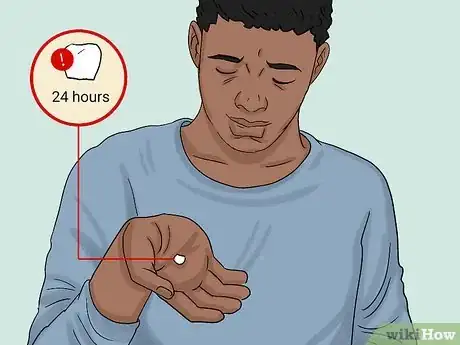
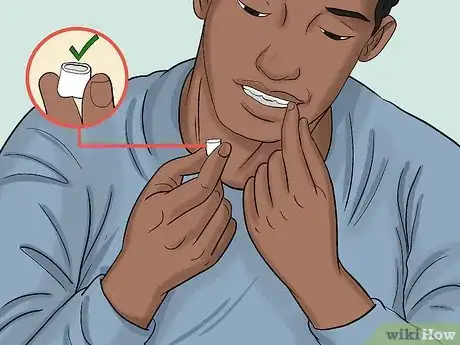
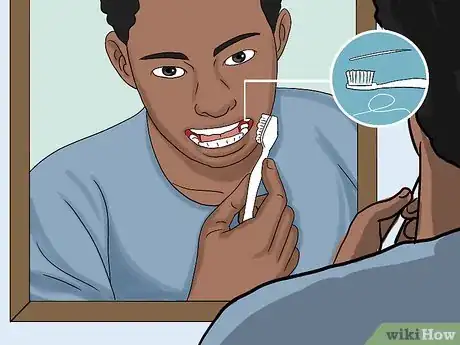

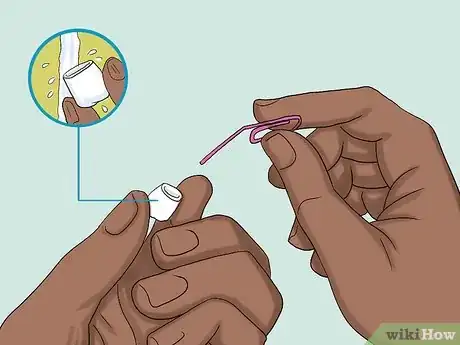




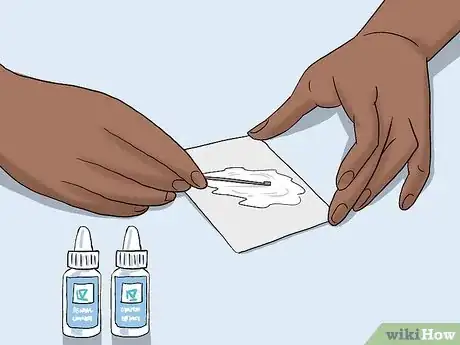


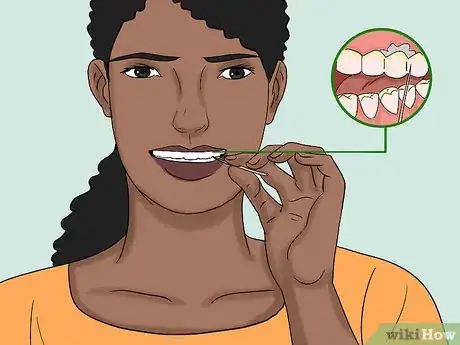


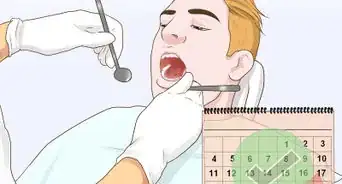



















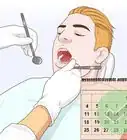





































Medical Disclaimer
The content of this article is not intended to be a substitute for professional medical advice, examination, diagnosis, or treatment. You should always contact your doctor or other qualified healthcare professional before starting, changing, or stopping any kind of health treatment.
Read More...